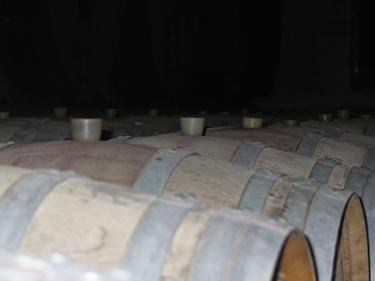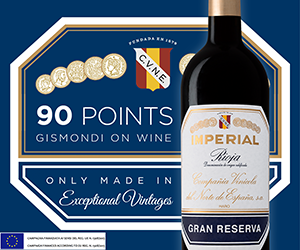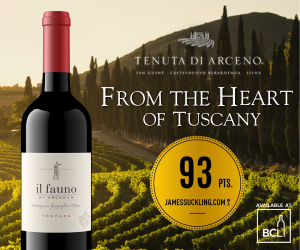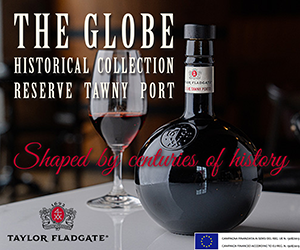Late-bottled vintage (or LBV) port is the no-fuss, no-mess, ready-to-pour drink from Portugal.
As the name implies, an LBV is a single-vintage wine that is bottled later than most other port types. It begins life in a wooden barrel and, until the two-year mark, undergoes the same production process as vintage port.
At this point the two wines travel in different directions. Vintage port is removed from the barrel and bottled-- to further age in glass for a decade. LBV remains in contact with the wood another two to four years. The extra time tends to mellow the fruit flavours and promote a mature, less spirity port. It is then filtered and bottled and sold for immediate consumption.
The rationale behind LBV port is to offer drinkers some of the complexity of vintage port at half the price, and you need not wait decades for it to mature. Also, unlike vintage port, LBV throws its crust or sediment in the barrel, not the bottle, so it requires no decanting.
Two exceptions to that rule are the LBVs of Smith-Woodhouse and Quinta do Crasto. Both go into the bottle unfiltered after spending a little less than four years in wood. This technique produces wines that are much closer to true vintage port, which is why they can age in the bottle and throw a deposit.
Joining me for today's tasting is David Spurrell, a long-time port consumer and member of the Vancouver Playhouse Wine Festival selection committee. Spurrell reminds us that early-bird tickets for the April 2000 festival's evening tastings are on sale now through Ticketmaster for $49. For more details, call 280-4444.
After our initial tasting, we retasted the wines together with four sensational blue cheeses sent by Spurrell's wife and daughter, Alice and Allison, who run Menu Setters, the great cheese shop and caterer at 10th and Alma in Vancouver. Here's our report complete with a traditional, blue cheese recommendation:
The Barros LBV opens with a big, black-licorice nose and a scent of sweetness. Spurrell describes it as "the smell of raisins with just a tiny bit of spirit [alcohol] in the finish." He sums it up as "soft, not too alcoholic and very drinkable." I say it's a fine introductory LBV for the curious but uninitiated. Our cheese recommendation: Fourme d'Ambert from France.
Dow's LBV was next. It opens with a sweet raisin fruit nose, much like the Barros. Spurrell thought it "similar in the mouth but slightly drier and warmer in the finish." He also found "more of a spicy character in the nose and flavour." We both thought it had more substance in the finish. "More meat at a better price," says Spurrell. Our cheese pick: English Stilton.
Taylor Fladgate is the category leader. It has a wonderful deep-red/purple hue with quite a ripe, fruity, berry aroma. Spurrell enjoyed "the extra weight and structure in the mouth." The wine is perfectly balanced with no spirity (alcoholic) notes. Spurrell correctly points out "it's still young and a tad tight with some tannin to lose." It's perfect with the Bleu de Gex, from the Haut Jura, France.
The Quinta do Crasto surprised both of us with its deep colour. Spurrell described the nose as "vintage port-like and the best of the group." Crasto is unfiltered, and you can taste the meatiness in this LBV. Spurrell liked "the structure and big fruit here," suggesting you could easily cellar this for five years. It's a lovely port that we paired with Bleu Laquiuelle from France.
Despite its "traditional" moniker, the Smith Woodhouse is anything but a normal LBV. The '86 spent just under four years in wood before it was bottled in 1990. Both Spurrell and I thought it was a bit dull on the nose and less complex than the Crasto. Spurrell described the flavours as "dried fruits laced with cedar and tea." It is elegant and balanced, but getting long in the tooth. It appears to be peaking now just in time for the holidays. Serve with fresh roasted hazelnuts, or a cigar.
Keep in mind that the maturation process of LBVs exposes them to air for long periods in the barrel, and that makes them a good bet to keep around after they have been opened. Most LBVs will remain quite drinkable up to 10 days after they have been opened.
WEEKEND WINE TASTING:
Late-Bottled Vintage Port from Portugal
Producer: Barros 1994 (bottled 1999)
Price: $26.95
Stock No.: 522904
Score: 16/20
Comment: Fine introductory LBV.
Producer: Dow's 1994 (bottled 1999)
Price: $22.50
Stock No.: 444786
Score: 17/20
Comment: Ripe, sweet style at a terrific price.
Producer: Taylor Fladgate 1994 (bottled 1999)
Price: $23.75
Stock No.: 289603
Score: 16.5/20
Commnet: Textbook LBV; on the drier side.
Producer: Quinta do Crasto 1994 (bottled 1998)
Price: $29.75
Stock No.: 454173
Score: 18/20
Comment: For the serious port drinker.
Producer: Smith Woodhouse 1986 "Traditional" (bottled 1990)
Price: $33.00
Stock No.: 304527
Score: 16/20
Comment: Fully mature, ready to drink.
Written By: ag

 quicksearch
quicksearch






